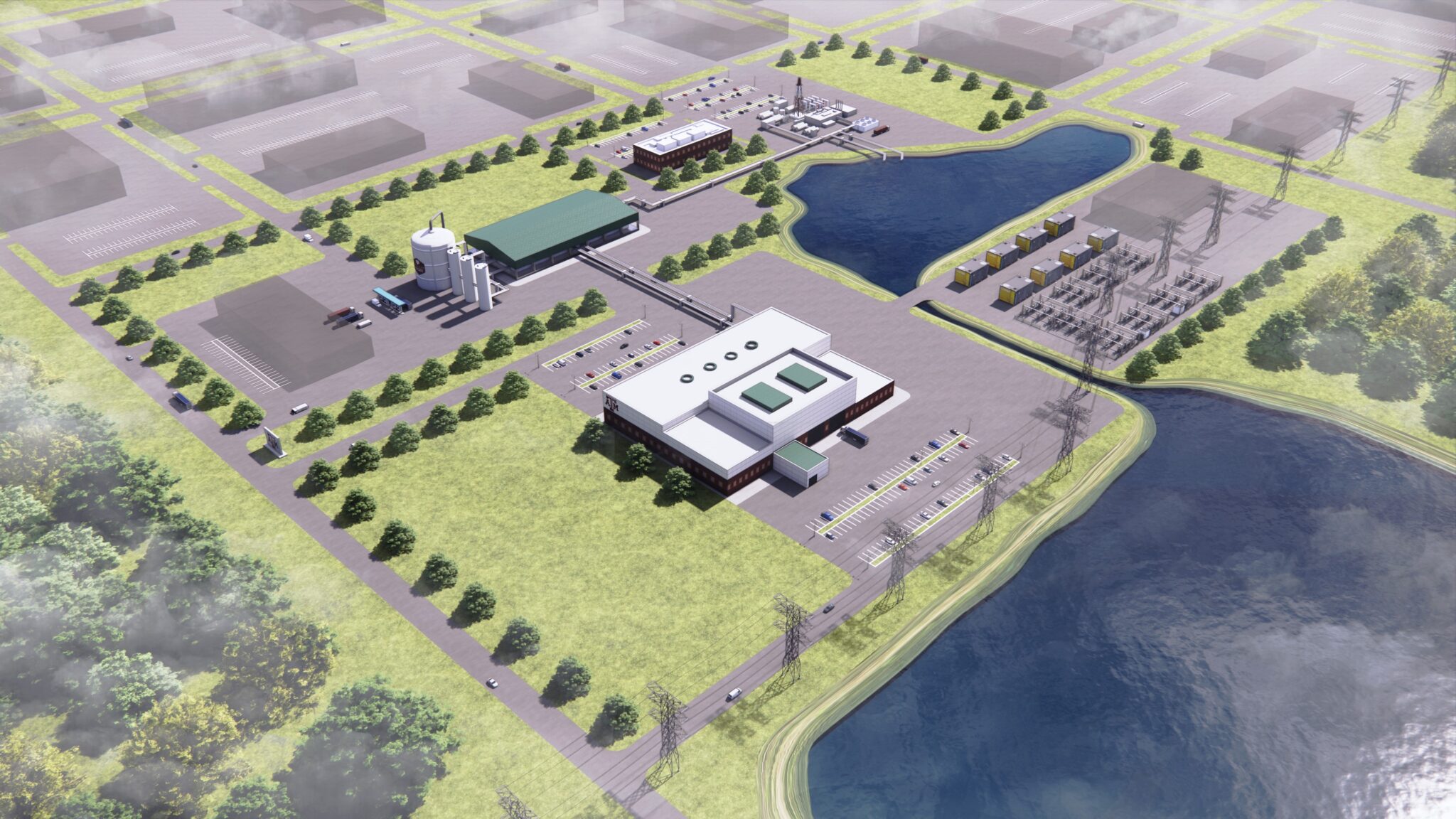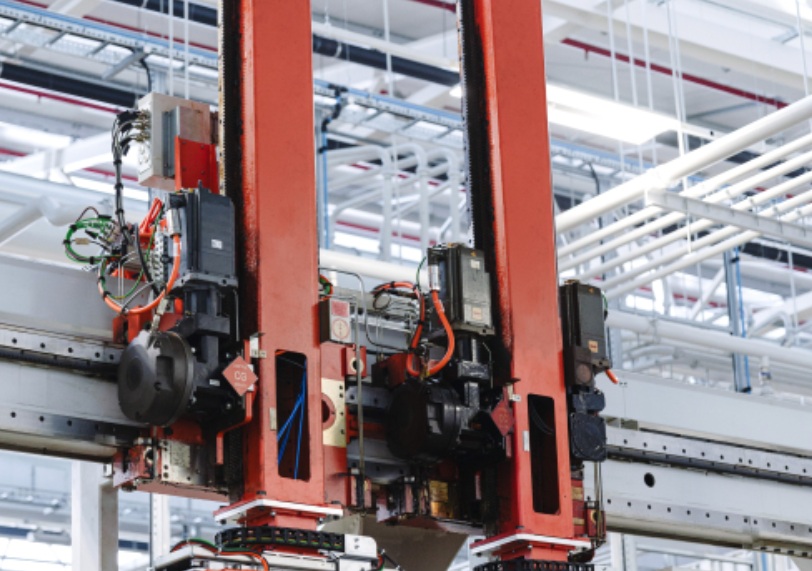Insider Brief
- Texas A&M University is providing land at its RELLIS campus for four companies to build and test small modular nuclear reactors, aiming to accelerate the next phase of nuclear energy development.
- The reactors, expected to be operational within five years, will generate over one gigawatt of power and could contribute to Texas’ electric grid through ERCOT.
- Small modular reactors are designed to be more efficient and flexible than traditional nuclear plants, though regulatory and cost challenges remain for widespread adoption.
- Image: A rendering of the Texas A&M University System’s “energy proving ground” at the RELLIS campus. (CannonDesign)
Texas A&M University is offering land to four nuclear reactor companies to build and test small modular reactors, aiming to accelerate the next phase of nuclear energy in the U.S., the Austin American-Statesman is reporting.
Chancellor John Sharp announced last week that the Texas A&M System has allocated space at its 2,400-acre RELLIS campus in Bryan for the development of small modular reactors (SMRs). Kairos Power, Natura Resources, Terrestrial Energy, and Aalo Atomics have agreed to participate in the project, called “The Energy Proving Ground,” which Sharp said will play a role in the future of energy delivery.
“Plain and simple: the United States needs more power,” Sharp said in a statement, as reported by the Austin American-Statesman. “And nowhere in the country, other than Texas, is anyone willing to step up and build the power plants we need. Thanks to the leadership of Gov. Greg Abbott and others in Texas state government, Texas A&M System stands ready to step up and do what is necessary for the country to thrive.”

The reactors, which could be built within five years, will focus on developing “commercial-ready technologies” and testing the latest designs. According to a Texas A&M release, the university has worked to streamline the regulatory process to help the companies bring their reactors online quickly.
The site will generate over one gigawatt of power, enough to supply about 750,000 homes. It could also contribute electricity to the Electric Reliability Council of Texas (ERCOT), which manages Texas’ power grid. As of Friday, nuclear power accounted for about 10.5% of ERCOT’s generation, with a total capacity of more than 5,260 megawatts.
Joe Elabd, vice chancellor for research at Texas A&M, said the agreements with the four reactor companies will have national implications.
“The agreements that the Texas A&M System has with Kairos, Natura, Terrestrial and Aalo are going to change the energy landscape for the whole country,” said Elabd, as reported by the Austin American-Statesman. “The Energy Proving Ground will allow these companies to safely test their SMRs and set the stage for deploying small nuclear reactors across the country.”
Small modular reactors are designed to generate nuclear power more efficiently than traditional large plants. They are compact, easier to install, and can be produced in factories rather than being built on-site. Advocates say SMRs could provide reliable, low-emission electricity, while critics warn that regulatory hurdles and construction costs remain challenges.
Texas A&M’s move comes as U.S. utilities and policymakers look for ways to expand nuclear energy to stabilize the power grid and reduce reliance on fossil fuels – as well as provide energy for a rapidly growing energy appetite for artificial intelligence.
Unlike wind and solar power, nuclear plants provide consistent electricity regardless of weather conditions. The U.S. Department of Energy has promoted SMRs as a potential solution to the nation’s growing energy demands, but commercial deployment remains limited.
For Texas, the project signals a broader push to establish itself as a leader in the energy transition. While the state is known for oil and gas, it has also become a top producer of renewable energy. The Texas A&M initiative adds nuclear to the mix, positioning the state as a testing ground for next-generation reactors.
The university has not disclosed how much land each company will receive or the specific terms of the agreements.








